Friedrich Schiller University Jena, Germany
Abbe Centre of Photonics, Jena, Germany
Controlled growth of transition metal dichalcogenide monolayers for applications in nanoelectronic and nanophotonic devices
Controlling the flow rate of precursors is highly essential for the growth of high quality monolayer crystals of transition metal dichalcogenides (TMDs) by chemical vapor deposition. Thus, introduction of an excess quantity of precursors affects reproducibility of the growth process and results in the unwanted contaminants. Here we demonstrate the use of Knudsen-type effusion cells for controlled delivery of the solid state precursors for the large area, high density, size-controlled and highly reproducible growth of monolayer TMD crystals [1]. The size of the crystals can be tuned between 10 – 200 µm. We demonstrate synthesis of MoS2, WS2, MoSe2 and WSe2 monolayer crystals as well as MoSe2-WSe2 lateral heterostructures and characterize them by optical microscopy, atomic force microscopy, high resolution transmission electron microscopy, Raman spectroscopy and mapping, photoluminescence spectroscopy, second harmonic generation and electrical transport measurements. [1-6] We show that the synthesized monolayers possess a high crystalline, optical and electrical quality based on their single crystalline nature and low defect density [2]. We demonstrate their implementation in novel field-effect and nanophotonic devices and discuss an influence of the point defect density on their functional characteristics [3-5]. Moreover, we present a novel synthetic route for integration of TMDs into the lateral heterostructures with other 2D materials [6].

References
- A. George et al., J. Phys. Mater. 2 (2019) 016001.
- S. Shree et al., 2D Mater. 7 (2020) 015011
- T. Bucher et al., ACS Photonics 6 (2019) 1002.
- R. Meyer et al., ACS Photonics 6 (2019) 1191.
- F. J. F. Löchner et al., Opt. Express 27 (2019) 35475.
- A. Winter et al., Carbon 128 (2018) 106.


























